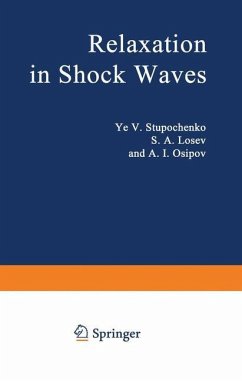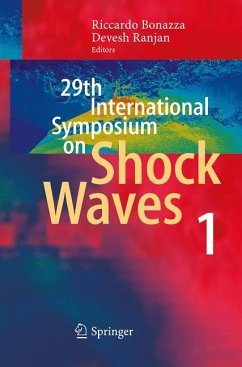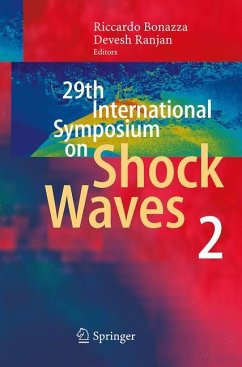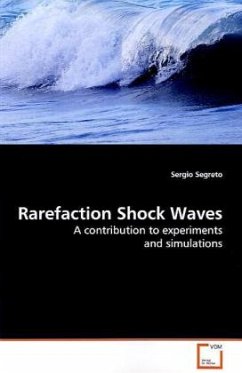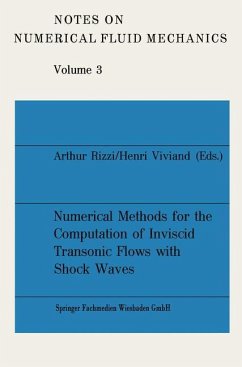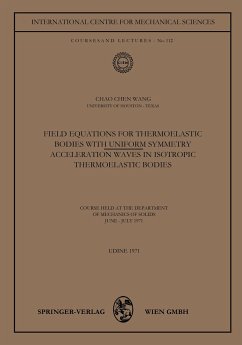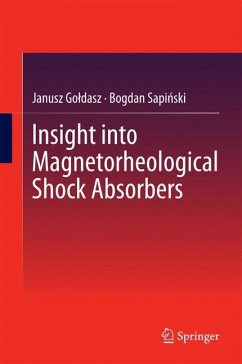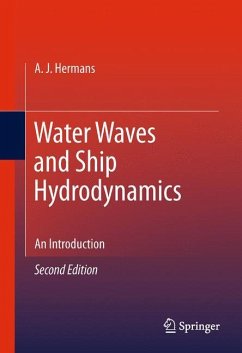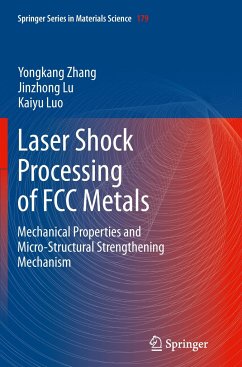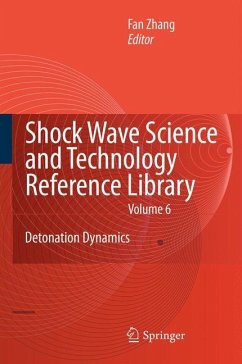
Shock Waves Science and Technology Library, Vol. 6
Detonation Dynamics
Herausgegeben: Zhang, F.

PAYBACK Punkte
57 °P sammeln!
This book, as a volume of the Shock Wave Science and Technology Reference Library, is primarily concerned with the fundamental theory of detonation physics in gaseous and condensed phase reactive media.The detonation process involves complex chemical reaction and fluid dynamics, accompanied by intricate effects of heat, light, electricity and magnetism - a contemporary research field that has found wide applications in propulsion and power, hazard prevention as well as military engineering.The seven extensive chapters contained in this volume are:- Chemical Equilibrium Detonation (S Bastea and...
This book, as a volume of the Shock Wave Science and Technology Reference Library, is primarily concerned with the fundamental theory of detonation physics in gaseous and condensed phase reactive media.
The detonation process involves complex chemical reaction and fluid dynamics, accompanied by intricate effects of heat, light, electricity and magnetism - a contemporary research field that has found wide applications in propulsion and power, hazard prevention as well as military engineering.
The seven extensive chapters contained in this volume are:
- Chemical Equilibrium Detonation (S Bastea and LE Fried)
- Steady One-Dimensional Detonations (A Higgins)
- Detonation Instability (HD Ng and F Zhang)
- Dynamic Parameters of Detonation (AA Vasiliev)
- Multi-Scaled Cellular Detonation (D Desbordes and HN Presles)
- Condensed Matter Detonation: Theory and Practice (C Tarver)
- Theory of Detonation Shock Dynamics (JBBdzil and DS Stewart)
The chapters are thematically interrelated in a systematic descriptive approach, though, each chapter is self-contained and can be read independently from the others. It offers a timely reference of theoretical detonation physics for graduate students as well as professional scientists and engineers.
The detonation process involves complex chemical reaction and fluid dynamics, accompanied by intricate effects of heat, light, electricity and magnetism - a contemporary research field that has found wide applications in propulsion and power, hazard prevention as well as military engineering.
The seven extensive chapters contained in this volume are:
- Chemical Equilibrium Detonation (S Bastea and LE Fried)
- Steady One-Dimensional Detonations (A Higgins)
- Detonation Instability (HD Ng and F Zhang)
- Dynamic Parameters of Detonation (AA Vasiliev)
- Multi-Scaled Cellular Detonation (D Desbordes and HN Presles)
- Condensed Matter Detonation: Theory and Practice (C Tarver)
- Theory of Detonation Shock Dynamics (JBBdzil and DS Stewart)
The chapters are thematically interrelated in a systematic descriptive approach, though, each chapter is self-contained and can be read independently from the others. It offers a timely reference of theoretical detonation physics for graduate students as well as professional scientists and engineers.



